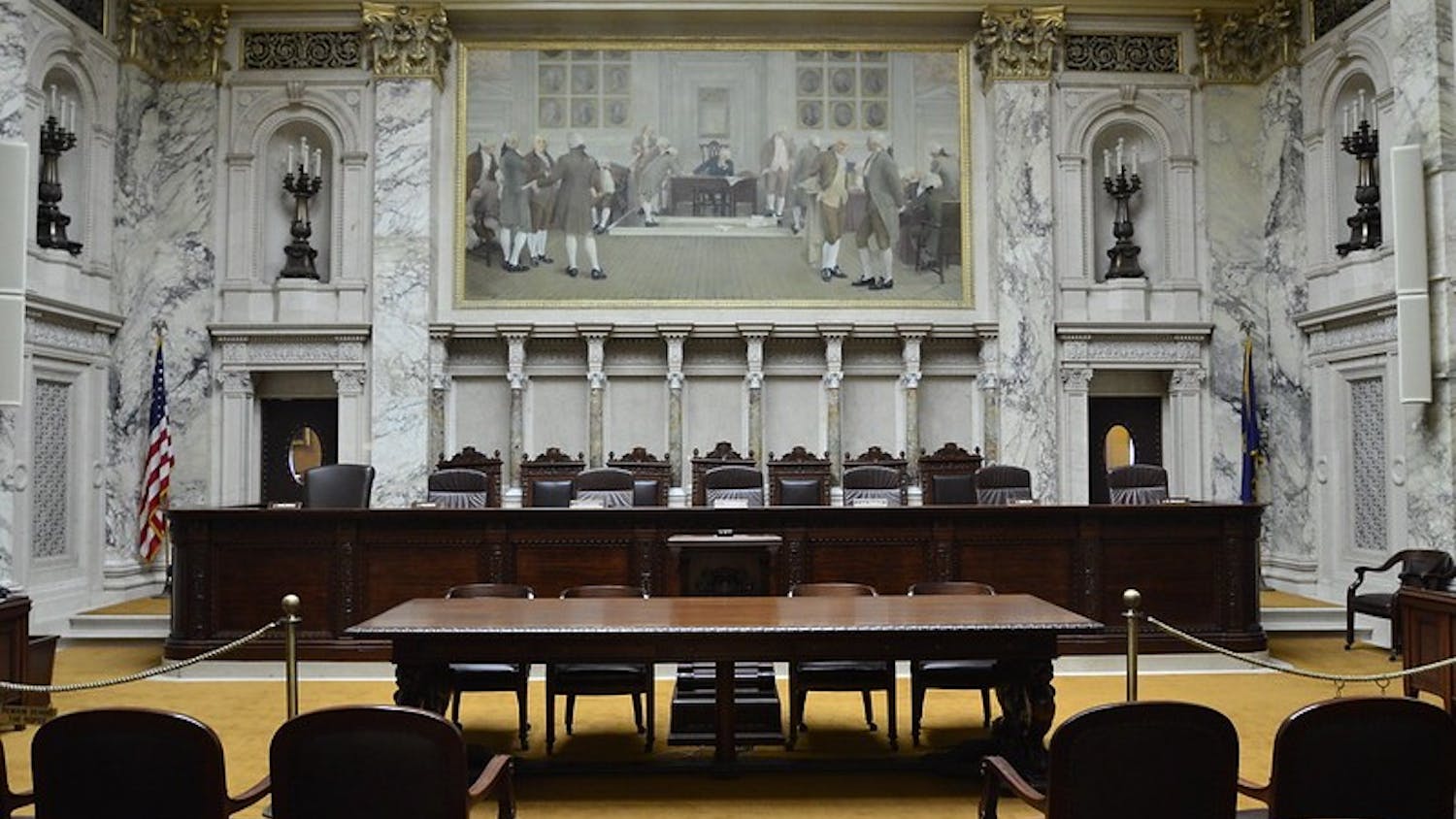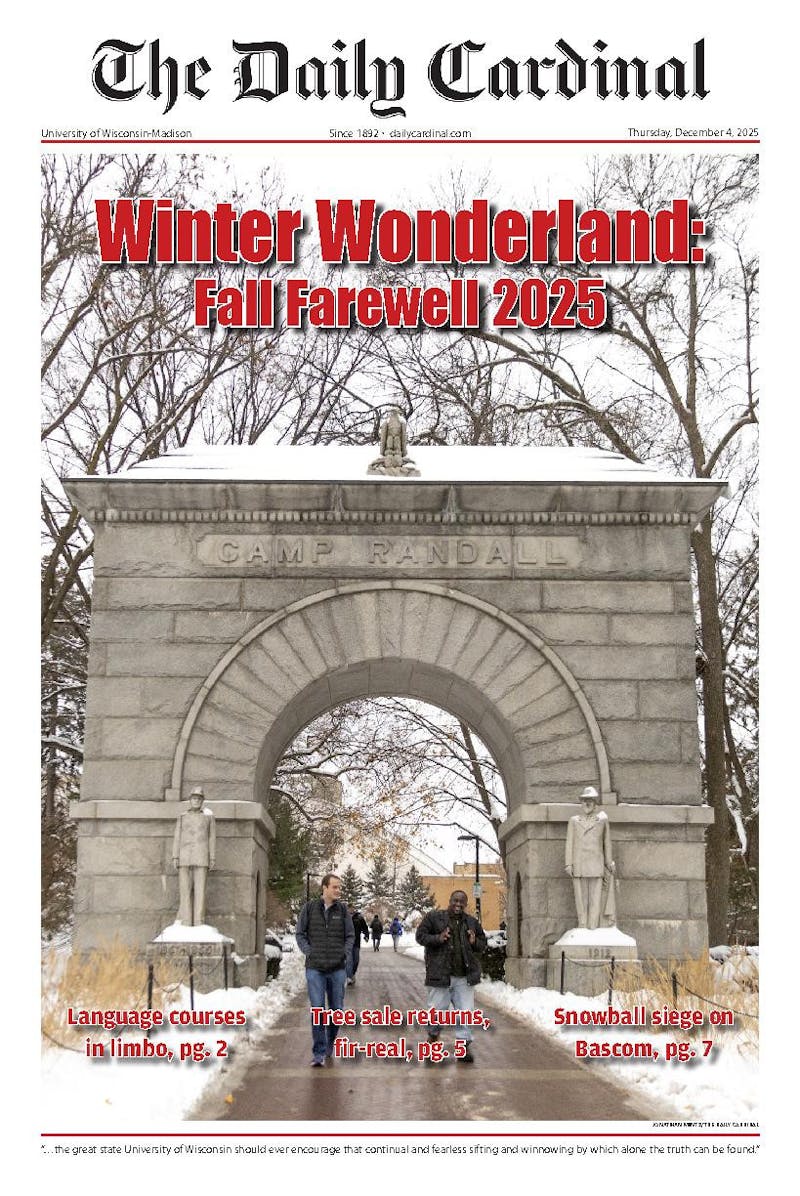One month ago, the NSF-DOE Vera C. Rubin Observatory in Chile released their survey telescope's first images of vibrant new galaxies, asteroids and other astronomical phenomena. UW-Madison associate professor Keith Bechtol, lead scientist of the observatory's systems engineering team, said the images, first released on June 22, create the most extensive map of the universe to date, kickstarting new scientific discoveries in the field of cosmic observation.
The 8.4 meter Simonyi Survey Telescope at the observatory is equipped with the world’s largest digital camera, the LSST Camera, capable of producing 3.2 billion-pixel images. It is located in the high and dry Andes mountains of Chile’s Atacama desert, where few clouds and minimal blurring from atmospheric turbulence make for the perfect view of the night sky.
Researchers at Stanford University’s SLAC National Accelerator Laboratory designed and constructed the telescope, operating it with the U.S. Department of Energy-founded NSF NOIRLab.
“The images will reveal asteroids and comets, pulsating stars, supernova explosions, far-off galaxies and perhaps cosmic phenomena that no one has seen before,” SLAC National Accelerator Laboratory director John Sarrao wrote in a release.
These first images also marked the beginning of the Legacy Survey of Space and Time (LSST), a 10-year plan to map the night sky “as quickly as possible,” Bechtol told The Daily Cardinal. Rubin Observatory plans to image each patch of the night sky around 800 times throughout the project’s duration, creating a high-resolution “cosmic movie.”
“The goal was really to just create the most detailed, most comprehensive map of the universe that we could and not only to observe the night sky once, but to observe it hundreds of times over a period of 10 years,” Bechtol said. “You can bring the night sky to life.”
UW-Madison’s contribution
Originally hearing mumblings about the project as a graduate student at Stanford University’s SLAC National Accelerator Laboratory, Bechtol studied dark energy as a postdoc and started working at Rubin Observatory in 2016. Alongside other UW-Madison scientists, including research associates and graduate students who contributed to the project, he spent years testing and troubleshooting the camera and telescope’s components.
“We tried to think of everything that could go wrong,” Bechtol said. “There's so many ways that we could have failed when building something of this complexity that has so much new technology.”
Bechtol said part of his team’s job was to test each individual hardware component of the telescope and camera, then test them again once they arrived in Chile for assembly, before putting them on the telescope itself and running additional tests and simulations to ensure they functioned together.
Many of the scientists at the observatory in Chile spent their days sleeping and their nights observing. Bechtol credits not just the thousands of scientists and engineers who designed Rubin Observatory but also the drivers who transported workers up the mountain, the cooks who prepared food and the service workers who worked at the summit’s hotel.
“One of the most enjoyable parts of the project has been learning from all the different experts in so many different domains that were needed to make this project possible,” Bechtol said, adding that people from more than 28 countries were involved in making the project successful.
New Horizons
Rubin Observatory plans to pursue four main goals over the next 10 years. They aim to create an inventory of the solar system, map the Milky Way galaxy and explore objects that they notice change position or brightness over the course of LSST. They also hope to learn more about the nature of dark matter and dark energy, a concept physicists have been trying to understand for years.
Dark energy has been theorized as a force that accelerates the universe’s expansion, pushing everything apart. Dark matter, on the other hand, has been described as a 'galactic glue' of sorts, keeping galaxies together and preventing them from flying apart in the vastness of space. To investigate dark matter and energy, scientists will measure the light deflection that results from dark matter’s interactions with the force of gravity, events that can alter the “space-time continuum,” Bechtol said.
“It's a really difficult measurement to make, but if you have billions of galaxies observed through an observatory, you can do this measurement in a really precise way through this combination of techniques,” Bechtol said. “We hope to get a better understanding both of how gravity works on the scale of the universe, but then also measure the cosmic expansion history.”
The first images have already revealed more than 2,000 new asteroids previously not known to scientists, as well as approximately 10 million galaxies in our universe, many of which have not been seen before. Throughout the 10-year period of LSST, Rubin Observatory will observe and capture around 20 billion galaxies in total.
Rubin Observatory’s media gallery, as well as the website Skyviewer, allow users to explore the Observatory’s range of vision across the night sky.
“We're just at the start,” Bechtol said. “Even though several of us have been working on the project for a few decades now, it's just the beginning.”
Editor’s Note: Annika Bereny interned at SLAC National Laboratory in the summer of 2023
Annika Bereny is the campus news editor for The Daily Cardinal. She previously served as the special pages editor. As a staff writer, she's written in-depth on campus news specializing in protest policy, free speech and historical analysis. She has also written for state and city news. She is a History and Journalism major. Follow her on Twitter at @annikabereny.






